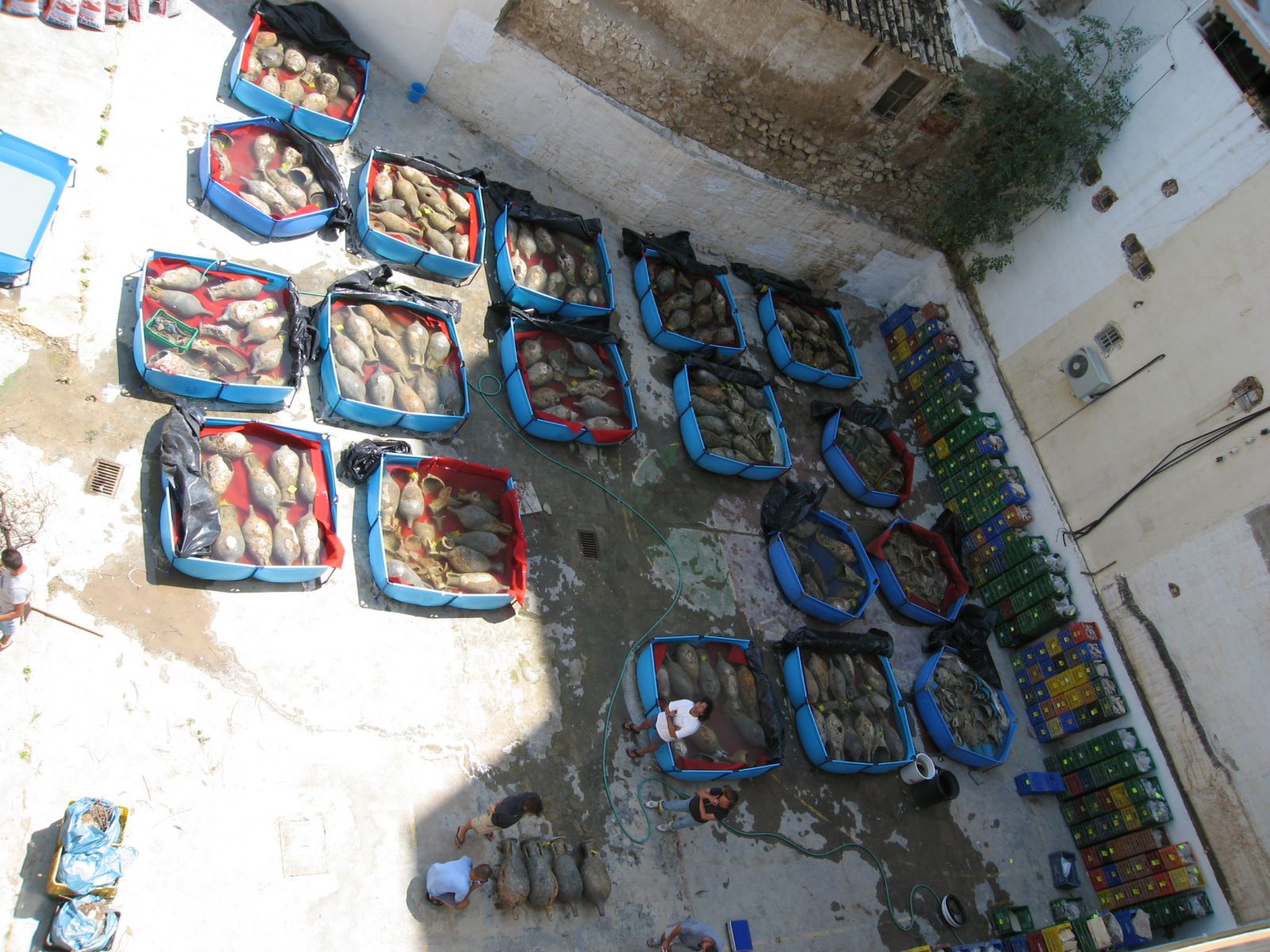The exhibition "La Vila Joiosa: Archaeology and Museum" prepared by the MARQ and the Museu de la Vila, will exhibit for the first time to the public pieces from the Roman wreck Bou-Ferrer of Villajoyosa, the largest Roman ship excavated in the Mediterranean.

Photograph: Desalting process of amphorae from the Bou-Ferrer wreck cargo in the Villajoyosa Museum (2007). Photograph: Franca Cibecchini.
This is an Imperial merchant ship from the 1st century AD, loaded with salted anchovies, mackerel and horse mackerel, packed in Dressel 7-11 type amphorae from the area of ancient Gades (Cadiz). They were stowed in three or four tiers, totalling approximately 3,000 amphorae.
It is considered a large ship, some 30 m long and 200 tonnes in size. Much of the ship's wooden hull is preserved under the cargo.
Its probable destination was Rome, sailing more than 50 miles from the coast, so the proximity of its submerged remains to the old Roman port of Villajoyosa, La Fonda, opposite La Vila beach, suggests that the ship had technical problems and, in an attempt by the crew to save itself and the very expensive cargo it was carrying, it was trying to reach the last port before Cape Nao, to head for the Balearic route towards Italy or a major port in the south of France. It did not succeed, and was wrecked very close to the coast.
Following initial prospecting and drilling campaigns as part of the European ANSER project (Anciennes Routes Maritimes Méditerranéennes) in 2003 and 2004, promoted by the Diputación de Alicante (MARQ) and the Villajoyosa Town Council (Municipal Museum), with the participation of the Image Workshop of the University of Alicante and the Generalitat Valenciana. The latter continued since 2006, under the direction of Carlos de Juan; Franca Cibecchini and Enriqueta Ventó, with underwater research on the wreck, which has shown that it is the largest ancient ship under excavation in the Mediterranean, with a length of about 30 m and some 200 Tm.
At the request of Villajoyosa Town Council, Bou-Ferrer is the first archaeological site in the Valencian Community to be named after its discoverers, Antonio Ferrer and José Bou.
